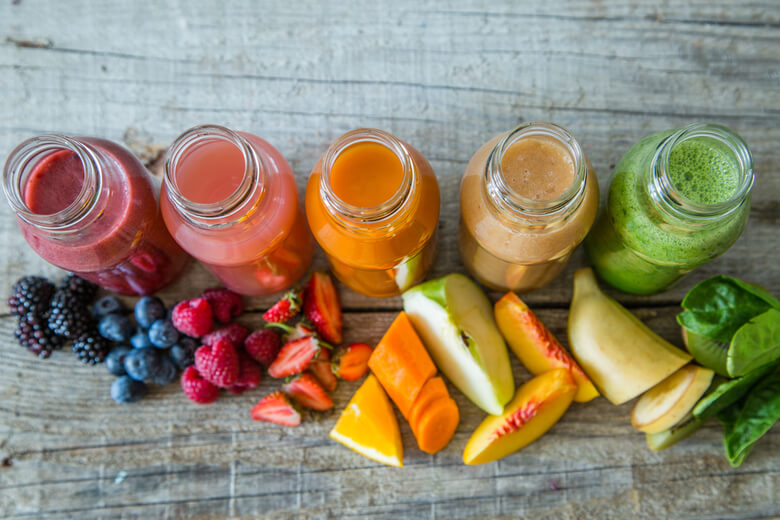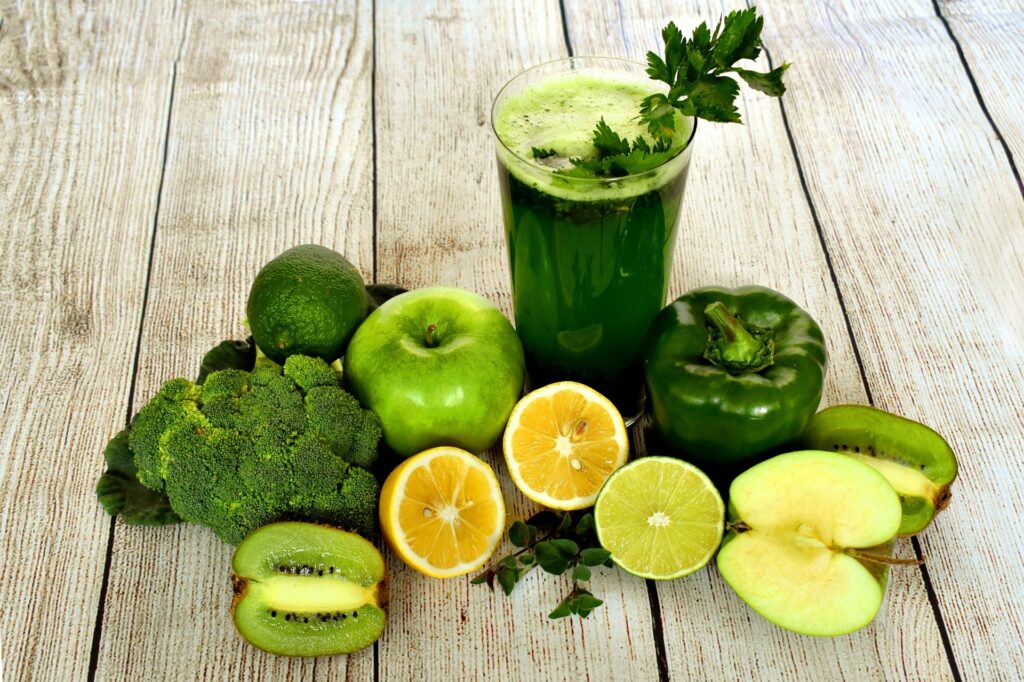Among the elements which poison us slowly and which justify to make a cure very regularly DETOX, the food additives.These are rightly of great importance.
Dyes
When we do our shopping, we all have more or less the same reflex: when we pick up a product on a shelf, we start by turning its packaging upside down to look for its composition.
The letter "E" is omnipresent, followed by three numbers that identify the additives according to a code.Legislation requires manufacturers to list all the ingredients used.
We can see this invasion of food additives, with the list of "E xxx" getting longer and longer.We have counted 9 of them in the composition of a well-known aperitif biscuit! You read that right: nine!
This drift contributes to pollute our organism and to put it in danger, some of these additives being paradoxically authorized in certain countries and prohibited in others!
Dyes are intended to flatter the appearance of a product to make it more attractive, more pleasing to the eye, which is an incentive to buy.
Some dyes (unfortunately few in number) are natural, toxicologically harmless:
- Curcumin, yellow (E 100) extracted from turmeric.
- Lactoflavin, yellow (E 101) extracted from egg yolk.
- Chlorophyll, green (E 140) extracted from plants.
- Caramel, brown (E 150) extracted from sugar.
- Charcoal, black (E 153) extracted from plants.
- Carotenoids, red (E 160) extracted from plants.
- Xanthophylls, red (E 161) extracted from plants.
- Betanin, red (E 162) extracted from beetroot.
- Anthocyanins, various shades (E 163) extracted from plants.
- Calcium carbonate, white (E 170) extracted from chalk.
But most dyes are chemicals whose effects on the human body are poorly known.The medical literature is very imprecise on this subject, the information contradictory.
Some dyes are banned in France but authorised in other countries.To take only the example of yellow dyes (it would take too long to list all the dyes), there are:
- Tartrazine (E 102), which is dangerous to health.
- Chrysoin S (E 103) is not recommended.
- Quinoline yellow (E 104) of questionable safety.
- Solid yellow (E 105) which causes allergies.
- Orange yellow (E 110) which causes severe allergies.
- Orange yellow GGN (E 111) is dangerous and should not be consumed.
Since a product can be coloured yellow with a derivative of turmeric (which is a spice) or egg yolk, it is reasonable to ask why chemical colouring products are used which are unnatural and hostile to the digestive tract.
If chlorophyll has the power to colour a food green, why use bright green (E 142), a dangerous chemical, suspected of being carcinogenic? And so on, again we are not going to go through all the chemical dyes.
Manufacturers don't use them, they abuse them.In any case, give preference to products without dyes.
Preservatives
The problem with preservatives is quite different.These food additives have a purpose.As their name suggests, they help to preserve the food they are added to.
They prevent the fermentation of products and the development of moulds that would make them unfit for consumption.
Preservatives have antiseptic and bactericidal properties.
Like the tongue of the Greek fabulist Aesop, preservatives are the best and the worst of things.For these additives attack the digestive mucosa.Their names alone suggest these negative effects: sulphur dioxide (E 220), calcium sulphite (E 226), orthophenylphenol (E 231), sodium nitrite (E 250), carbon dioxide (E 290), to name but a few.
It is important to be objective: the development of the food industry involves the use of such preservatives.To take just one example, it would be totally impossible to market pre-packaged sliced cooked ham without the preservative sodium nitrite mentioned above.
Food safety, which is so much in the news at the moment, necessarily implies such practices, which guarantee to consumers the proper preservation of foodstuffs transported from the places of production to the places of distribution, which are often very far away.
If you want a cooked ham without preservatives, you can find it at your local butcher's.
But we should not be too optimistic.We are well aware that the vast majority of current consumption takes place in the modern temples that are the hypermarkets.
And the products marketed in such places must be preserved according to drastic but necessary protocols.
These additives are the price we pay for progress.It is our bodies that pay the price.
Antioxidants
Antioxidants, as their name indicates, prevent the oxidation of food and the resulting organoleptic changes: the rancidity of oils, the change in colour of meat, sausages or dried fruit...
To understand the action of antioxidants, let us take the example of an apple.If we cut it into slices and place them on a plate, after a few minutes the apple starts to turn brown.It oxidises on contact with the air.After several hours it turns dark brown.
The dried apple sold in shops is white, the initial colour of the pulp.The antioxidants have done their work, the apple retaining the same appearance as if it had just been picked.
We can make the same points about antioxidants as we did about preservatives, they are the price of modernism.
So on the packaging of a well-known puree in sachets we find these two antioxidants: butylhydroxyanisol and butylhydroxytoluene.
Finally, there are E 320 and E 321, otherwise consumers might look a little grey.Without these antioxidants, potato flakes would not be white but brown (the oxidation of potatoes is identical to that of apples mentioned above).
Can you imagine a brown mashed potato?
No, of course not.
These antioxidants are therefore indispensable in this product (mashed potatoes in bags).But we don't have to eat mashed potatoes in bags.
We can cook potatoes and put them through a good old-fashioned food mill and then add a nice knob of butter.And in this case we don't need antioxidants.
Of course, a mother coming home from work, caught up in time, 9 times out of 10, will prepare mashed potatoes in bags for her children.
If, as is likely, she accompanies this half-chemical purée with pre-packaged ham, the said children will take several hours to digest the whole thing ...whereas, on the other hand, a natural purée accompanied by a ham cooked the old-fashioned way by a pork butcher will be digested in no time.
In one case, the digestive tract will suffer.In the other case, no, on the contrary.Wasn't this dish once recommended by doctors for fragile and delicate people?
Gelling agents, emulsifiers, thickeners
The other major family of food additives includes gelling agents, emulsifiers and thickeners.These substances are texture agents whose purpose is to give volume to products, to make them more durable.
To take two simple examples, if a gelling agent were not used in a product intended to prepare a custard, it would not set as it cooled, and if an emulsifier were not used to make mayonnaise homogeneous from its components (oil and egg yolk), it would not last for several months, the time between its manufacture and its consumption.
Again, if we prepare mayonnaise at home, a few minutes before eating it, we do not need to add any additives, of course.
Texturising agents
Texturising agents are less aggressive than colourings, preservatives and antioxidants.
They are often natural products such as agar-agar, a seaweed (E 406), carrageenates, other seaweeds (E 407), apple pectin (E 440), locust bean gum (E 410) or guar gum (E 412)...
But some of these additives are still of chemical origin, such as the sodium and potassium polyphosphates (E 450) used in the industrial manufacture of cooked hams, but we can always choose ham whose labelling guarantees that no such polyphosphates are used.
Glutamate
Some other food additives, finally, escape the coding of this letter E followed by three numbers.
This is the case with sodium glutamate, which is widely used in savoury dishes to enhance the taste.It is known as a flavour enhancer or flavouring agent.
Glutamate is used extensively in Asian cuisine.Many digestive problems after a meal in a Chinese restaurant are not caused by the food but by the glutamate incorporated into the food.
The most glutamate-rich consumer products are packet soups, for the reason mentioned above, it enhances their taste.But nothing forces us to consume such soups, except the lack of time, 3 to 5 minutes being enough to prepare them.
A good vegetable soup does not require the use of glutamate.It is our digestive tract that then appreciates the difference.
In summary, the invasion of food additives in today's consumption is a major reason to eliminate them by stimulating the emunctories through an effectiveDETOX.







